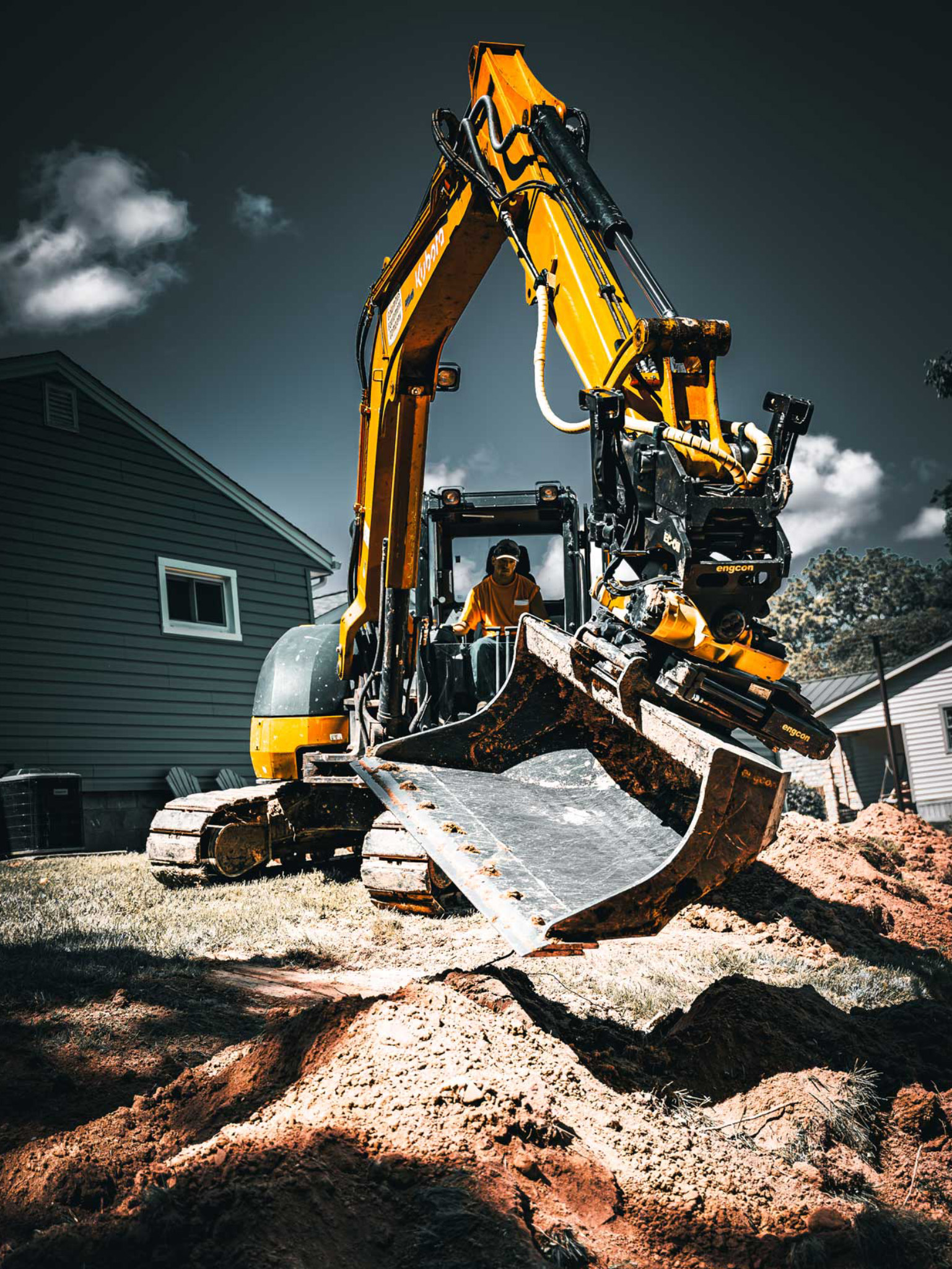In-Depth Exploration: The Scientific Research Behind Superior Excavation Practices
From ancient hand tools to modern-day hydraulic excavators, the advancement of excavation strategies has actually been a testament to human resourcefulness and technological innovations. What really establishes superior excavation practices apart is a deep understanding of geological concepts, coupled with the use of cutting-edge devices and methodologies.
Advancement of Excavation Techniques
Throughout background, the development of excavation strategies has actually played a vital function in advancing building techniques and archaeological discoveries. From the simple tools made use of by our ancestors to the innovative equipment employed in modern times, the development of excavation methods has actually dramatically transformed exactly how we come close to numerous jobs.
In ancient times, manual work with fundamental tools such as wheelbarrows, shovels, and pickaxes was the primary technique of excavation. This labor-intensive procedure restricted the depth and range of excavations, frequently causing slow progression and restricted access to certain sites. As civilizations advanced, so did the methods and tools used for excavation.
The Industrial Change marked a turning point in excavation exercise with the intro of steam-powered equipment. This technology changed the field, permitting faster and much more considerable excavations. In modern times, technology plays an essential role in excavation, with developments like general practitioner systems, drones, and 3D scanning improving precision and effectiveness in the field. The advancement of excavation methods continues to shape the way we develop, explore, and comprehend the globe around us.
Role of Innovation in Excavation

The assimilation of sophisticated technology has basically reinvented the area of excavation, boosting precision and efficiency to unmatched levels. One of the vital technological improvements that has substantially influenced excavation methods is the usage of general practitioner systems. These systems enable precise mapping of excavation websites, making it possible for operators to properly situate below ground utilities and structures. Furthermore, making use of telematics in excavation equipment has allowed real-time tracking of device efficiency, causing positive upkeep and boosted operational productivity.
Additionally, the development of 3D modeling and simulation software has streamlined the planning procedure for excavation projects. Operators and engineers can now imagine the entire excavation process before beginning, maximizing and recognizing prospective challenges operations. Along with this, the execution of drones in excavation activities has promoted airborne studies, volumetric measurements, and site examinations with unmatched speed and precision.
Geological Principles in Excavation
An understanding of geological concepts is vital for making sure the architectural stability and security of excavation sites. you can check here Geological elements play a crucial role in identifying the expediency and safety of excavation projects.
By carrying out thorough geological surveys and evaluation, engineers and excavators can create approaches to minimize dangers and make certain the effective conclusion of excavation tasks. Ultimately, incorporating geological principles into excavation methods is crucial for achieving risk-free, effective, and lasting outcomes.

Most Recent Tools for Excavation
In the world of excavation methods, modern developments in devices have actually transformed the performance and accuracy of excavation procedures. One of the most recent devices making waves in the industry is making use of drones furnished with advanced imaging technology. These drones can offer in-depth airborne studies of excavation sites, using real-time information on topography and potential dangers. This info aids in far better planning and decision-making during the excavation procedure.
An additional cutting-edge tool obtaining appeal is the execution of 3D printing technology for producing customized excavation devices. This allows for the manufacturing of specialized tools that are tailored to the details requirements of a job, enhancing performance and minimizing downtime.
In addition, innovations in products science have caused the advancement of stronger and much more durable excavation tools. lancaster trenching. Tungsten carbide-tipped excavator attachments, for example, offer remarkable efficiency in tough ground conditions, boosting performance on-site
Science's Effect on Excavation Practices

Furthermore, improvements in products science have caused the development of more powerful, much more resilient excavation tools and tools. As an example, the use check these guys out of composite products in shovels and diggers has actually enhanced their efficiency and long life, eventually increasing performance on excavation sites. Additionally, clinical research study on soil mechanics and geotechnical design has supplied important understandings into soil behavior, permitting excavation experts to make enlightened decisions pertaining to excavation techniques and soil stablizing techniques. Generally, scientific research proceeds to drive advancement and enhancement in excavation practices, making excavation tasks much more efficient, economical, and lasting.

Conclusion
Finally, the evolution of excavation techniques has been considerably affected by innovations in innovation and a much deeper understanding of geological principles. The most recent tools and tools utilized in excavation have actually enhanced performance and precision in the field. The application of clinical knowledge has actually considerably improved excavation practices, bring about more reliable and sustainable methods for excavating various sorts of products.
In the realm of excavation practices, modern technologies in tools have revolutionized the performance and accuracy of excavation procedures. By leveraging clinical principles, the excavation industry has been able to substantially improve efficiency, precision, and security in excavation processes. GPR allows excavation teams to non-invasively check and map subsurface frameworks, utilities, and prospective risks, enabling them to intend excavation tasks with greater precision and minimized risk of mishaps.
In addition, clinical research on soil auto mechanics and geotechnical design has supplied important understandings right into soil habits, allowing excavation experts to make enlightened decisions regarding excavation techniques and dirt stabilization techniques. Overall, science proceeds to drive development and renovation in excavation techniques, making excavation tasks extra efficient, cost-efficient, and lasting.